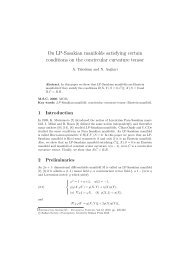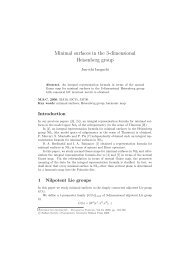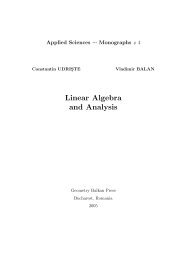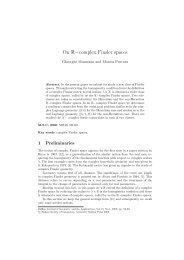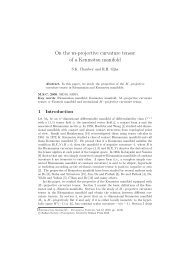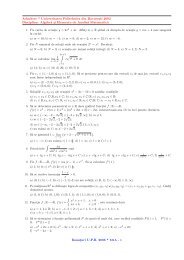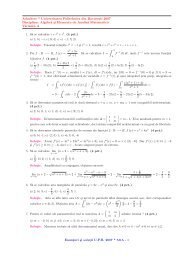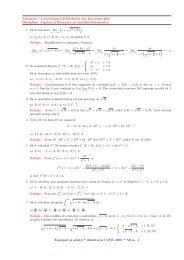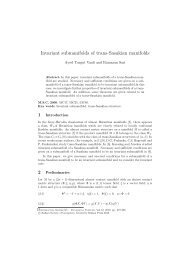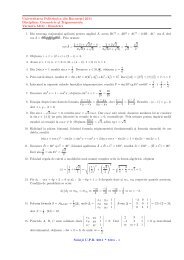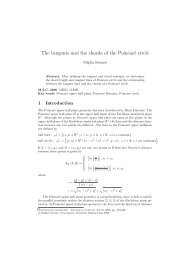Semigroup of generalized inverses of matrices
Semigroup of generalized inverses of matrices
Semigroup of generalized inverses of matrices
Create successful ePaper yourself
Turn your PDF publications into a flip-book with our unique Google optimized e-Paper software.
<strong>Semigroup</strong> <strong>of</strong> <strong>generalized</strong> <strong>inverses</strong> <strong>of</strong> <strong>matrices</strong> 147correspondence between the set M m×n (K) and the set <strong>of</strong> the associated semigroups.Some algebraic properties in this set will be treated; like the intersection <strong>of</strong> semigroupsand isomorphisms. Also, ordering <strong>of</strong> sets in the real inner product space, isa recent subject. In [3], this subject addressed as main result, and proved using theLorentz-Minkowski distance for ordering certain sets. We shall also follow this patternby using <strong>generalized</strong> <strong>inverses</strong> for ordering sets <strong>of</strong> the introduced semigroups by minuspartial order.2 Preliminary notesDefinition 2.1. Let A be an m × n matrix over K. The Moore-Penrose inverse <strong>of</strong> Adenoted by A + is the n × m matrix X over K which satisfies the four equations(2.1) AXA = A, XAX = X, (AX) ∗ = AX, (XA) ∗ = XA.For every matrix there exists only one Moore-Penrose inverse. If X is at least a{1}− inverse <strong>of</strong> A, then AX and XA are projectors on R(A) and R(X) the rangespaces <strong>of</strong> A and X respectively and rank(AX) = rankA = rank(XA). For moreproperties and remarks, see ([1]), ([5]).Denote by A {1} and by A {1,2} the sets <strong>of</strong> all {1}− <strong>inverses</strong> and {1, 2}− <strong>inverses</strong> <strong>of</strong>A respectively. We will denote by small letters the sub-<strong>matrices</strong> <strong>of</strong> a matrix X and byI and 0 the identical and zero <strong>matrices</strong> or identical and zero sub-<strong>matrices</strong>. Lemmaswithout pro<strong>of</strong>s are either easy to pro<strong>of</strong> or well known in the precedent references.Lemma 2.1. Let A be an m × n matrix over K <strong>of</strong> rank r. Then (1) There exist non singular <strong>matrices</strong> P and Q such that A = Q −1 ar 0( )0 0a2) A + = P −1 −1r 0Q.0 0(a3) The elements <strong>of</strong> A {1} are <strong>of</strong> the form P −1 −1rf(aA {1,2} are <strong>of</strong> the form P −1 −1rfefa r e)Q.eg)P .)Q and the elements <strong>of</strong>The first assertion is an elementary lemma in linear algebra. The second one andthe third need only a direct verification in (2.1). For this purpose the pro<strong>of</strong> wasomitted.



